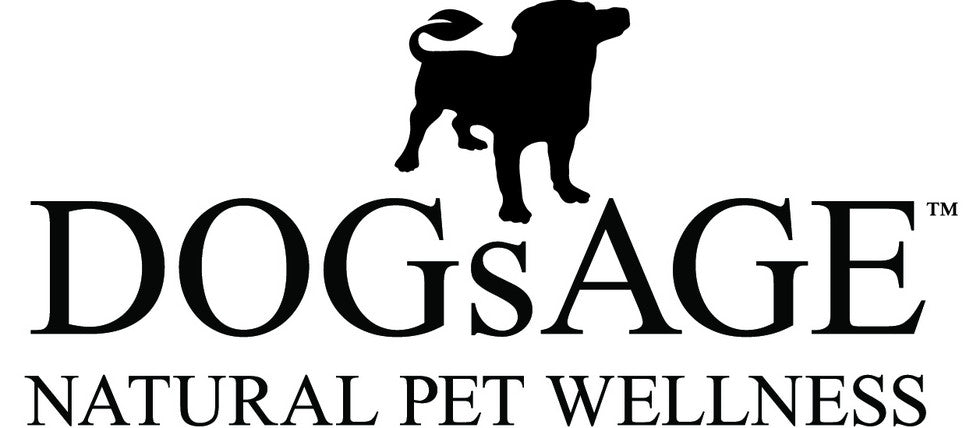Natural Ways to Manage Your Dog’s Arthritis Pain May 4, 2017 11:20

Many people assume that “old dog” behaviors are a normal part of the aging process. However, if a dog is having trouble getting up from a lying position, walking stiff, limping, or standing with their back hunched, it might be a sign that they have arthritis. If this sounds like your dog, take a look at this list of pet arthritis symptoms to see if they are displaying any other telltale signs.
If you suspect your dog has arthritis, know that this is not something they have to just live with. There are ways that you can minimize their pain and increase their quality of life. The first thing you should do is take your dog to the vet for an assessment and to discuss arthritis pain management if needed. I also suggest giving them supplements that can help their arthritis pain.
Some pet parents choose to explore natural approaches to pain management for their dogs before moving to prescription medications. Others use traditional pain medication but want to supplement that with alternative treatments so they can use the lowest possible dose. Whether you go with prescription pain medication or not, there are many alternative therapies that can offer dogs some relief from arthritis symptoms.
Alternative Therapies for Managing Arthritis in Dogs
I’m a big proponent of treating your pet naturally if you can.These are the natural treatments I know have helped many dogs.
Massage
During massage, a person manually manipulates an animal's muscles and connective tissues to help relax and “unbind” them, which allows bodily fluids to move freely through the area. This increased circulation decreases pain and stiffness, helps to flush toxins, and can improve the function of your dog’s immune system. Massage also increases flexibility and makes them feel better in general by reducing stress.
You can take your dog to a trained animal massage therapist but even massaging your dog yourself at home can help. A bonus of massaging your pet yourself is that the quality time you spend together can help strengthen your bond.
Chiropractic Adjustments
Chiropractic treatment for dogs involves low force manual manipulation of the spinal column, joints, or other affected areas. When bones in the spine are out of position in relation to one another, and if they are not moving properly, this vertebral misalignment can cause the body to shift into unhealthy positions. This can put undue stress on joints, causing degeneration, inflammation, and discomfort.
Water Therapy
Water therapy, often called hydrotherapy (meaning “water healing” in greek), typically takes place in a swimming pool or on a treadmill submerged under water. The water adds buoyancy so the weight of the body is supported, helping a dog move naturally and taking pressure off their joints. At the same time, water is denser than air so it provides resistance, which helps strengthen their muscles. Hydrotherapy also helps with improved circulation, increased joint flexibility, and decreased joint pain.
Many animal rehabilitation facilities have small swimming pools or underwater treadmills. I’ve also heard of some public swimming pools allowing dogs to swim there right before they drain and clean the pool.
Cold Laser
Often called low-level laser therapy, cold laser therapy is a noninvasive procedure that uses light to stimulate damaged cells inside the body. This increases energy and blood circulation in the treated area, increasing cellular function and mobility. This new cellular activity helps to reduce inflammation, alleviate pain, and increase circulation. It also prompts the body to release endorphins - the body's natural pain reliever.
Many veterinarian, and animal rehabilitation, clinics have a cold laser machine. You can also look into purchasing an over-the-counter laser unit to use at home.
Acupuncture
Similar to cold laser and chiropractic treatments, the goal of acupuncture is to help the body to heal itself. From a Chinese veterinary medicine perspective, it does this by correcting energy imbalances in the body. During treatment, an acupuncturist inserts very thin needles into targeted “meridians” in the body to help promote the healthy flow of energy, increase blood circulation, stimulate the nervous system, and release anti-inflammatory and pain relieving hormones.
Acupuncture treatments are typically given by a holistic veterinarian or someone specifically trained to treat animals using this method.
Give Them A Try
According to Dr. Paul Rosenberg of Pets In Motion, “Most joint degeneration/arthritis is from improper motion – either too much or too little motion. This improper motion can be from a forceful acute trauma or gentle but chronic poor postural forces. Proper exercise to ensure the joints can work through their natural and full range of motion and to ensure that the muscle are strong enough to stabilize the joint in proper alignment is key to both prevention and treatment. This can be assisted by a certified animal chiropractor, certified canine massage therapist, a rehab certified physiotherapist, rehab vet or vet tech loosening tight joints and prescribing an appropriate exercise program.
The therapies listed above can help correct imbalances in your dog’s body, and prompt the body to heal itself, naturally so I think they are definitely worth a try. However, please keep in mind that these won’t work the same for every dog and most of these treatments are a process rather than a “quik fix”. It can take several sessions before you see an improvement in your pet and often maintenance treatments are needed.
I suggest trying one, giving it a bit of time to work, and moving on to another therapy if you don’t see the desired results. Unlike ongoing prescription medication “therapy”, the therapies listed above won’t produce unwanted side effects.
Has your pet tried any of these treatment modalities? Did it help?

